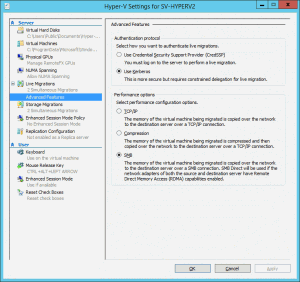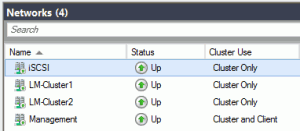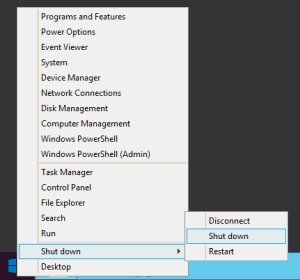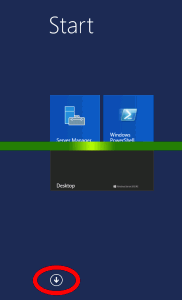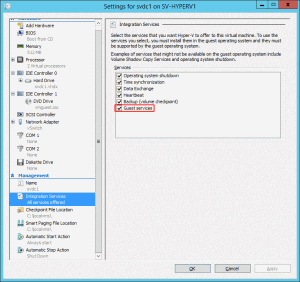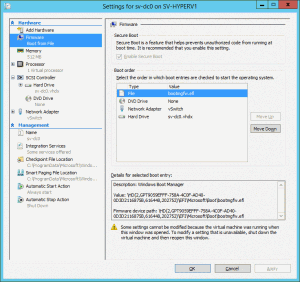Table of contents
The release date for Windows Server 2012 R2 (and Windows 8.1) has been set for October 18th, 2013. I got a copy of the previews of both Windows Server and Hyper-V Server, from TechNet. Links for both were included in the rotating banner, but you won’t have much trouble finding them if you look.
There is a lot of material already about the new features in Hyper-V and failover clustering. Rather than write “Me-Too” article #429384 that just rewords what’s already been said, I’ll provide you with a list of my observations and thoughts.
- The first thing I noticed is that their ISO packages are still putting the string “HYPERCORE” in the name of the image for Hyper-V Server. Dear Microsoft, that’s causing us headaches when we try to explain to people that there’s no such thing as “Hyper-V Core”. Please stop.
- If you are using the Hewlett-Packard N40L Microserver from our sub-$2000 cluster document, you must disable the onboard adapter to install 2012 R2 Preview. I’m hoping that changes prior to release, but I’m fortunate enough to have plenty of pNICs in my boxes that I was able to live without the onboard. Someday, I might get enterprising and try to see if I can shoehorn a driver in there and get it to work. I am a little disappointed that a bum driver/hardware interface can prevent a modern OS from even booting, but this is a preview so I’ll withhold judgment until RTM.
- As I was building up my converged fabric and virtual switches, I found that I no longer need to take special steps to configure jumbo frames (sometimes called jumbo packets) on the Hyper-V virtual switch. I just need to enable it for the individual adapters. Thank you Microsoft!
- I still had to manually disable VMQ on the team adapter, since it didn’t detect that my pNICs don’t support VMQ. However, during preliminary testing, it didn’t seem that leaving VMQ enabled caused my performance to drop like it did on 2012.
- Unlike a lot of other testers, my hardware isn’t good enough to test RSS. I did turn on SMB for Live Migrations and it worked right away.
- Instead of named, dedicated, and separated Live Migration and Cluster Communications networks, I just have two cluster networks that are allowed for both traffic types. SMB multichannel automatically puts them to good use. Live Migration can also use multiple paths now, so I’m getting true link aggregation for both SMB and Live Migration all the time with no special effort on my part.
- The Start button is back. I didn’t miss it that much, really, but I am getting use out of the right-click option to Shut Down. It’s really disappointing that “Disconnect” is there but “Log off” isn’t. It’s tough enough to get admins to do the right thing. It’s worse when the wrong thing is so much easier to do. Logging off is still a click at the bottom left and a jump up to the top right to click your name, and then “Sign off”.
- The Start Menu is still gone, unfortunately. But, instead of making you click all the way at the bottom-left of the screen, right-clicking, and then traveling all the way to the right of the screen to click the “All Apps” button, there’s now a white down arrow that appears immediately to let you get to the other applications on your system.
- Remember way back when it was “My Computer”? And then when it just became “Computer”? Now it’s “This PC”. I can’t think of any useful reason for this. Maybe they think that users won’t know it isn’t an XBox or a phone unless they’re told. Maybe Microsoft gets a kick out of making all of us technical writers say things like “right-click ‘My Computer’ or ‘Computer’ or ‘This PC’ or whatever you have this week” so that we spend more words covering all the bases than providing useful content.
- The new resolution options for guest console connections provided by Enhanced Session Mode is very nice. It will be especially helpful on my laptop. It would be much more helpful if it worked with guests other than 2012 R2.
- You can now use Copy-VMFile to copy files from the host to the guest. It’s a bit awkward to use but could be a real time saver. On the Integration Services tab of the virtual machine’s settings, you have to enable Guest Services.
- Copy/paste of items between the guest and the console through the Virtual Machine Console only works if 2012 R2 is the guest.
- I Live Migrated all my high availability VMs to node 2 and watched the SMB multichannel Live Migration do its magic. Then I rebooted node 2 and watched as it automatically Live Migrated all of the virtual machines right back prior to shutting down. I’m not sure why anyone would want to, but I haven’t found any way to shut this feature off.
- After node 2 came back up, I logged on to my non-highly available virtual machines. They wanted to know why they had not been gracefully shut down. The feature that ignores my automatic shut down actions and just cuts off my VMs is one I’d like to disable. I may have neglected to upgrade Integration Components in those particular VMs, but still. Surely that portion hasn’t changed dramatically since 2012?
- Everywhere I can find in the GUI, the word “snapshot” has been replaced with “checkpoint”. I would still prefer to keep the “snapshot” terminology, but there it is.
- When I reboot node 2, I have about a 50/50 chance of it coming online in a stable condition. On the bad boots, you can’t connect to it and its VMs struggle to perform on the network. Node 1 doesn’t seem to have any troubles. Also, RDP sessions into it are flaky. The command line has some fairly severe artifacting.
- The BIOS tab for Gen2 virtual machines is completely gone. It’s been replaced with a Firmwaretab. It allows you to enable secure boot. The option for NumLock on or off at boot is gone, but it appears to automatically turn on NumLock.
- I was able to use the tools to expand a VHDX on the SCSI chain of a virtual machine. Online expansion doesn’t work for VHDX files on the virtual IDE controller, but I’m fairly certain that’s a limitation of the IDE specification and not Hyper-V.
Overall, there is nothing really surprising or difficult about R2. If you’ve been using 2012, you should be able to slip right into it without any headaches.
8/28/2013 additional note: The New-VMSwitch documentation still says that the default bandwidth reservation mode (QoS) is Weight. It is still wrong, just as it was in 2012. The default mode is Absolute. This can’t be changed after the switch is created, so if you care about QoS then pay attention in your creation scripts.
What are YOUR first impressions of 2012 R2?
Leave a comment below!
